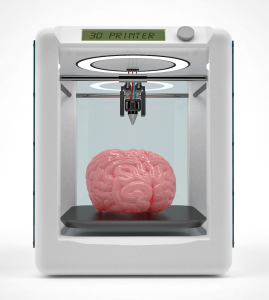As with the develop ment of any new technology, there are often pros and cons, especially when it comes to its use in places like hospitals and doctors’ offices. Such is the case with the use of 3D printing technology in the medical field, which is creating new issues in liability. At the same time, these new innovations can also help us in the legal field in areas of proving liability or negligence in cases of medical malpractice. When it comes to liability in medical malpractice, there are ways that technologies can create confusion, but also ways that they can clarify and assist in the creation of a case.
ment of any new technology, there are often pros and cons, especially when it comes to its use in places like hospitals and doctors’ offices. Such is the case with the use of 3D printing technology in the medical field, which is creating new issues in liability. At the same time, these new innovations can also help us in the legal field in areas of proving liability or negligence in cases of medical malpractice. When it comes to liability in medical malpractice, there are ways that technologies can create confusion, but also ways that they can clarify and assist in the creation of a case.
Questions Created by Using 3D Printing Technology in The Medical Field
Negligence is often difficult to prove in many medical malpractice cases dealing with human beings, but when you add in a product that is designed by humans and computers and printed by a machine, a new set of questions arises as to who is liable for any mistakes. In the medical field, 3D printers can be used to make everything from surgical aids to lifelike models to medical devices, and maybe someday soon, these machines can make replicas of human organs. This opens up a whole line of liability that could fall anywhere along the spectrum from software designer or manufacturer to surgeon depending on who is ultimately responsible for the product that impacts the patient and where the defect from negligence came into play.
When looking at liability associated with these products, we need to also think about who is conducting the training for use and how the product was ultimately used. Was the surgeon correctly trained on how to use the medical device? Did the trainer provide proper information? Many of these answers depend on how the regulatory bodies govern the products, if the product itself actually had contact with the patient, or if proper use was taught to the clinician by the manufacturer or designer. Just as the emergence of 3D printers is becoming more commonplace in patient healthcare, it’s also finding its way into the courtroom.
How 3D Printing Technology May Help Provide Answers in Medical Malpractice
3D printing can be used as tools in the investigative stages of a medical malpractice case as they can create exact models of organs or defective devices to prove if negligence is to blame for an injury that occurred on an operating table or in a doctor’s office. In this regard, they can be extremely useful in creating replicas to be used by expert witnesses to help judges and juries visualize how a heart valve is supposed to work. They can also be used to distinguish the difference between a device that was created properly and one that was manufactured with a defect. Essentially, these tools are beneficial in creating comparisons or restructuring scenes that can be shown in court or to investigators.
Whether a device was manufactured incorrectly, or if it was used in a negligent way, medical malpractice cases are difficult to prove at any stage. If you feel that you have been the victim of negligence in a medical setting, it’s important that you contact a medical malpractice attorney who can help you determine negligence in the case. Many law firms also have access to emerging and innovative technologies and experts that may be able to help you in proving liability in your case.
References:
Maria Fontanazza (2015, April 22). Who’s Liable for 3-D Printed Medical Devices? Retrieved April 13, 2017, from https://medtechintelligence.com/feature_article/whos-liable-for-3d-printed-medical-devices/
30, 2. M. (2017, January 20). 3D Printing – A New Dimension of Expert Testimony. Retrieved April 13, 2017, from https://theexpertinstitute.com/3d-printing-a-new-dimension-of-expert-testimony/


